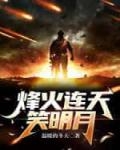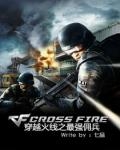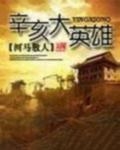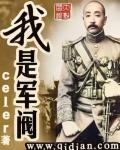Chapter 267
As the saying goes, a trapped beast will still fight. What's more, this trapped beast is a heavy military group composed of millions of troops. Whether it is Yuri or Zhukov, it is not so easy to chew the hard bone of Berlin.
The Seelow Heights blocked the throat of the First Belorussian Front's advance towards Berlin, while Zhukov's Corps was blocked by the German "Gross Keris-Lübben" Group on the outskirts of Berlin's south line. Both sides wanted to be the first to make a breakthrough and attack the city of Berlin, but the German resistance was extremely tenacious, and the Soviet army had to pay a huge price for every step forward.
The weather was gradually getting hotter and the rainfall was gradually increasing. During the fierce fighting on the Cerro Heights, two heavy rains fell in just four days. The roads began to become muddy, creating difficulties for the Soviet offensive.
Fortunately, Moscow's support for Berlin was increasing. Since the First Belorussian Front successfully crossed the Oder River, a large amount of supplies had been continuously transported from the Soviet Union. The troops commanded by Yuri received more than 6,000 wagons of logistical supplies, and more than 7.2 million artillery shells alone - Comrade Stalin's will was to turn Berlin into a ruin and wipe it off the map.
In addition to logistical supplies, Yuri received reinforcements from three army groups. So far, the troops he is in charge of have exceeded 1.2 million people, including 84 infantry divisions, 6 cavalry divisions, 5 tank armies, 3 mechanized armies and 2 independent heavy tank brigades.
Of course, if we only look at the number of troops, the size of the German troops responsible for defending Berlin is larger than Yuri's combat group, but the problem is that the number of German troops is too mixed. In order to further strengthen the defense of Berlin and block the Soviet offensive forces outside the city, recreating the scene of the Soviet "Battle of Moscow", the German High Command even sent old men in their sixties and seventies who were trembling when walking to the battlefield. Such soldiers obviously did not have much combat effectiveness.
At this time, Berlin was actually the second largest city after London, with a population of over four million. Although a large number of Berlin citizens fled the city as the Soviet army advanced, the refugees that followed filled the entire city again.
The entire Berlin battlefield is 45 kilometers long from east to west and 38 kilometers long from north to south. In such a vast area, there are a total of 20 districts, 14 of which are outside the city and the rest are in the city. For the Soviet offensive forces, the city area is obviously the most difficult to conquer, because this area is full of solid reinforced concrete buildings, and many are even made of whole stones. What's more terrible is that there is a huge building complex underground in the city of Berlin, which includes a subway system with a total length of more than 80 kilometers and dense underground waterways.
Before the battle of Seelo Heights began, Yuri did not know much about the situation on this height. After all, this was an area where the Germans had deployed heavy troops, and it was difficult for Soviet intelligence personnel to infiltrate. It was not until the third day after the battle that Yuri received specific intelligence on the Germans' deployment of troops on Seelo Heights.
At this damn choke point, the Germans deployed the entire 56th Armored Corps, in addition to a large number of National Commandos who served as cannon fodder. In addition, the 11th Armored Corps provided support on the flanks. To the north of this high ground, the Germans deployed the 408th Artillery Corps, and to the south of the high ground, the 404th Artillery Corps. These two artillery corps had a total of nearly 1,300 artillery pieces of various types. Directly behind the Seelo Highlands, along the road from the Seelo Highlands to Mingheberg, 200 anti-aircraft guns were deployed, more than half of which were 88mm heavy guns.
On the first day of the fierce battle on the Selo Heights, the offensive of the 9th Guards Army commanded by Chuikov was blocked, and then the 1st Guards Tank Army commanded by Katukov joined the battle and tried to provide support for the infantry. But soon, a disastrous scene appeared. In the narrow passage north of the Selo Heights, Katukov's troops were bombarded by intensive German artillery fire.
After all, Katukov was an experienced armored forces commander. He realized the seriousness of the problem and tried to withdraw the attacking troops, but the infantry that coordinated the attack and the destroyed tanks blocked the retreat route. In the end, in just over half an hour of attack, Katukov's troops lost more than 50 tanks.
It had been a long time since the Soviet army launched the counterattack and suffered such heavy losses in such a short battle, which made Yuri very angry.
In the following two days, the Soviet army gave up the large-scale offensive near the Seelow Heights. On the one hand, Yuri ordered the Second Tank Army to try to launch an offensive in the direction of Bernau, and on the other hand, he ordered the Ninth Guards Army to send small units with mortars and light artillery into the jungle in battalions to infiltrate the rear of the German defense line.
What is surprising is that this highly dangerous infiltration tactic actually worked.
On the fifth night of the Battle of Seelow Heights, troops belonging to the 27th Guards Infantry Division launched . Taking advantage of the night, the Soviet army rushed into the German position. In the melee, the commander of the 76th Armored Infantry Regiment of the German Army was killed and his troops fell into chaos.
That night, the 4th Guards Army began to attack the positions of the German 20th Armored Infantry Division from the front. Taking advantage of the gap in the positions of the 76th Armored Infantry Regiment, the Soviet troops rushed into the German defensive positions and cut off the road line south of the high ground.
At six o'clock the next morning, when it was just getting light, the Soviet army began a frenzied artillery bombardment of the Selo Heights. At the same time, the air force of the front also launched a massive bombardment of the entire heights. The final full-scale offensive against the Selo Heights was officially launched.
By noon, the 4th Guards Army, which took the lead in launching the attack, entered the city of Sailo and took control of the northern area of the Sailo Heights. Subsequently, Katukov's tank troops avoided the steep slopes and poured into the heights from the passage on the north side.
Although the German army quickly deployed its reserve forces and tried to repel the Soviet troops that had rushed to the heights, the German army, which had lost the prerequisite of geographical advantage and was not superior in terms of manpower and weapons and equipment, no longer had the capital to compete with the Soviet army.
The most fatal thing was that at the breakthrough point on the north side of the Seelow Heights, two Soviet armies swarmed in. They followed the road from Seelow to Münchberg, detoured to the rear of the German 56th Armored Corps, and encircled the German troops in a narrow area south of the heights.
Throughout the night, the encircled German troops tried to break out towards Berlin, but the narrow area and complex terrain, which were originally advantages, turned into disadvantages for the encircled German troops. When the sky brightened again, the more than 5,000 German troops who failed to break out of the encirclement lost their fighting spirit and chose to surrender.
In the breakout battle that night , more than 23,000 German soldiers were killed, and the entire southern part of the Cerro Heights became a huge morgue, which shows how tragic the battle was.
The loss of Seelow Heights meant a huge gap in Berlin's second line of defense for the German army. The Soviet army poured in like a tide from this gap and could rush all the way to Köpenick and Rosenthal, in fact, rushing to the city of Berlin. Although the German army had two more lines of defense in the inner circle, these two lines of defense were already the defense lines of Berlin city, and the Soviet army had officially entered Berlin.
…
Rosenthal, the main attack zone of the 2nd Guards Tank Army and the 9th Shock Army.
Yuri stood on the ruins of a bombed four-story building and looked towards the city of Berlin with the help of a telescope.
At this time, behind Yuri, there were several people in American military uniforms, and the first one was looking at Berlin through a telescope. He was wearing a boat cap with four stars on it, and his short white hair showed from under the cap, indicating that he was already quite old.
This man's name is Omar Bradley. He is an assistant to General Eisenhower and is currently the commander of the U.S. Second Army. Not long ago, he was promoted to lieutenant general.
Bradley was not an unknown person. Before that, he had been commanding American troops in North Africa and cooperating with Patton. After the North African campaign ended, he was transferred to Britain, and the Normandy Landing Operation was actually commanded by him.
Three days ago, when Yuri led his troops to break through the German Seelow Heights defense line and quickly rushed to the outskirts of Berlin, Bradley accepted Eisenhower's commission and rushed to the Eastern Front. His identity was an observer of the US military, and his mission was to observe the Soviet army's upcoming battle to capture Berlin.
That's right, now Berlin has become the focus of the whole world, and everyone's eyes are focused here. On the European battlefield on the Western Front, perhaps affected by the situation in Berlin, the German resistance has become weak. In the Ruhr industrial area, the Ruhr Army Group commanded by Model has fallen into chaos, and almost every day there are soldiers who voluntarily surrender to the British and American forces.
When the situation developed to this point, even the least intelligent people knew that Germany's Nazi regime had come to an end. Model himself had lost hope for the future. These days, the subordinate units of the entire Ruhr Army Group had not received any orders from him. There were even reports that he had committed suicide.
After several years of war, the Soviets finally pushed their troops to the gates of Berlin. The opportunity to avenge their previous defeat had come, so Yuri received an order from Moscow: Stalin asked him to launch a massive artillery bombardment before officially launching an attack on Berlin.






